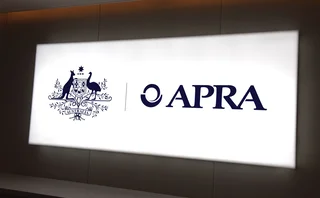
Initial margin: the final act
Practice makes perfect, the saying goes. When it comes to the final wave of implementation for uncleared margin rules, however, this may not hold true

Practice makes perfect, the saying goes. When it comes to the final wave of implementation for uncleared margin rules, however, this may not hold true.
On September 1 of this year – six years after the first batch of dealers were forced to post initial margin (IM) on bilateral swaps – the sixth and final cohort will be swept into the global regime.
The compliance process has been tried, tested and improved upon over the years – yet this final hurdle represents a challenge like no other. The estimated 775 firms set to breach the threshold – €8 billion average aggregate notional amount (AANA) of bilateral swaps – is more than the previous five phases combined. The cohort breaks down to a whopping 5,400 counterparty relationships, according to the International Swaps and Derivatives Association (Isda).
Even accounting for exchange threshold relief, which permits those with IM exchange amounts below €50 million to trade without documents, Isda believes at least 1,000 relationships require repapering and custody account setups. Some fear a repeat of the bottlenecks that plagued the first phase and cast a shadow over phase five.
“A bottleneck continues to be the biggest enemy for phase six, especially when you look at custodians,” says one lawyer working with phase six clients on IM implementation.
It’s not just the numbers. While the buy side dominated the 300 or so firms caught in phase five, a drop in the AANA threshold from €50 billion to just €8 billion spreads the requirements across a far broader assemblage of derivatives users. This includes funds subject to other regulatory frameworks, such as Ucits funds. One investment manager warns of an “existential clash” between consumer protection rules aimed at fostering liquidity and those intended to eliminate systemic risk.
Many firms coming into scope have limited access to the most commonly used collateral – highly rated government bonds. Some may choose to post eligible equities, others may balk at the 50% haircut. For the first time under IM rules, cash collateral looks set to play a larger role. Here, firms face cross-border tangles. US rules require cash IM to be reinvested in cash-like instruments such as money market funds. European rules permit only Ucits-eligible money-market funds – yet these are few and far between.
The rules will be put to the test for managed accounts, which see large funds allocate parts of the portfolio across different investment managers. Where these funds rely on the exchange threshold monitoring, a close eye is required to avoid individual managers inadvertently breaching the group threshold.
There’s another big difference this time around. Implementation is taking place against a backdrop of soaring inflation, rising interest rates and heightened geopolitical tension. Market disruption and heightened volatility is bad news for implementation projects. It’s also bad news for firms relying on threshold monitoring, as modest market moves can have an outsize impact on options-heavy exposures.
Those hoping for a further reprieve in the roll-out of the regime will likely be disappointed. While the Covid‑19 pandemic delayed the final two waves by a year, participants say phase six is too far down the road to be postponed again.
“It’s too late in the day,” says the lawyer working with phase six clients. “Never say never, but we’ve already had delays, and I can’t see any chance of this being delayed further.”
Only users who have a paid subscription or are part of a corporate subscription are able to print or copy content.
To access these options, along with all other subscription benefits, please contact info@risk.net or view our subscription options here: http://subscriptions.risk.net/subscribe
You are currently unable to print this content. Please contact info@risk.net to find out more.
You are currently unable to copy this content. Please contact info@risk.net to find out more.
Copyright Infopro Digital Limited. All rights reserved.
As outlined in our terms and conditions, https://www.infopro-digital.com/terms-and-conditions/subscriptions/ (point 2.4), printing is limited to a single copy.
If you would like to purchase additional rights please email info@risk.net
Copyright Infopro Digital Limited. All rights reserved.
You may share this content using our article tools. As outlined in our terms and conditions, https://www.infopro-digital.com/terms-and-conditions/subscriptions/ (clause 2.4), an Authorised User may only make one copy of the materials for their own personal use. You must also comply with the restrictions in clause 2.5.
If you would like to purchase additional rights please email info@risk.net
More on Regulation
Regis-TR and the Emir Refit blame game
Reporting overhaul was marred by problems at repositories, prompting calls to stagger future go-live dates
Iosco pre-hedging review: more RFQs than answers
Latest proposals leave observers weighing new clampdown on pre-hedging
FCMs welcome CFTC margin rule ring-fencing clarification
Final rule on separate accounts replicates no-action relief as Republicans strip out gold plate
Stuck in the middle with EU: dealers clash over FRTB timing
Largest banks want Commission to delay implementation, but it’s not the legislator’s only option
Treasury clearing timeline ‘too aggressive’ says BofA rates head
Sifma gears up for extension talks with incoming SEC and Treasury officials
Rostin Behnam’s unfinished business
Next CFTC chair must finish the work Behnam started on crypto regulation and conflicts of interest
European Commission in ‘listening mode’ on potential FRTB changes
Delay or relief measures on the table after UK postpones start of Basel III to 2027
Australian FRTB projects slow down amid scheduling uncertainty
Market risk experts think Apra might soften NMRF regime to spur internal model adoption








